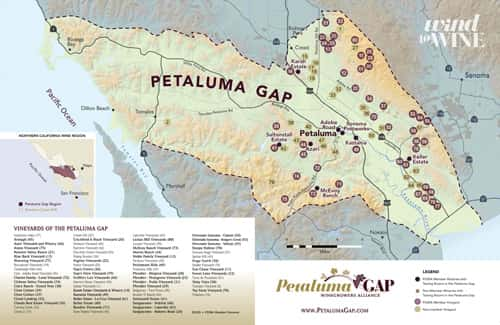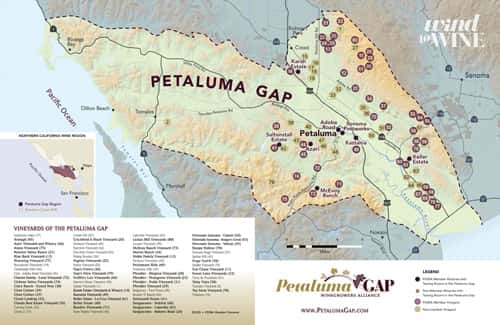
Petaluma Gap: The New AVA
One of the oldest cities in California, Petaluma is known to be a diverse destination for antique shops, dining, nightlife and an old-town feel. In December of 2017, The Petaluma Gap, which currently holds nine wineries and more than 80 vineyards, became the newest AVA in the United States.
The 15-mile gap receives wind flow and fog from Tomales Bay and Bodega Bay. The cooling effect means grapes ripen later, resulting in wine that are intense, acidic, fruity and well balanced.
The Petaluma Gap has been growing and producing grapes for 150 years, and today, wineries such as Adobe Road Winery, McEvoy Ranch and Sonoma Portworks are just a few of its many growing members.
Gap Facts
Total vineyard acres planted: 4,000
Total acres within AVA boundaries: 202,476
Number of wineries outside the AVA producing Petaluma gap wines: 50 plus
Varietal breakdown by acreage planted:
Pinot Noir: 75%
Chardonnay: 13%
 Syrah: 12%
Syrah: 12%
Other: 1%
Go-Wine in a Can
Nielsen reports that canned wine today is a $28 million business, up from sales of $14.5 million in 2016 and just $6.4 million the year before. The styles and brands of wines available in a can keep expanding and offer a good option for places and activities where bottles would be too heavy, impractical or unsafe. Poolside party? Afternoon hike? A stroll along the coast? The possibilities are endless. Last year’s summertime favorite was Rosé. According to the Nielsen report, it’s been growing at a 70 percent rate.
www.go-wine.com
Ribbit Ribbit, a Toad Exhibit
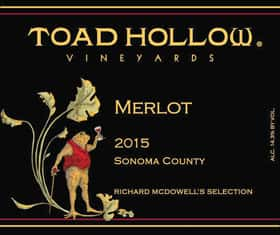 At Toad Hollow Wines in Healdsburg, there’s an amphibious element decorated along the walls and on wine labels. Artist Maureen Erickson has worked with the winery since 1999, implementing humor and creativity into their wine labels—inspired by late owner, Todd Williams’ “big dose” of personality. Todd was nicknamed “Toad” from an early age and loved stories from Kenneth Grahame’s The Wind and the Willows. “Todd dared to be different by offering a fine wine at a reasonable price—and have fun doing it,” says Erickson. His wife, Frankie Williams, has been at the helm of the Hollow inspiration since Todd’s passing in 2007.
At Toad Hollow Wines in Healdsburg, there’s an amphibious element decorated along the walls and on wine labels. Artist Maureen Erickson has worked with the winery since 1999, implementing humor and creativity into their wine labels—inspired by late owner, Todd Williams’ “big dose” of personality. Todd was nicknamed “Toad” from an early age and loved stories from Kenneth Grahame’s The Wind and the Willows. “Todd dared to be different by offering a fine wine at a reasonable price—and have fun doing it,” says Erickson. His wife, Frankie Williams, has been at the helm of the Hollow inspiration since Todd’s passing in 2007.
“Her wit and enthusiasm along with her lively cast of characters, keeps the ‘fine art fun’ culture alive at the winery and in the tasting room,” says Erickson. “Todd believed that wine should be a part of everyday life; that fine wine should be fun and affordable.”
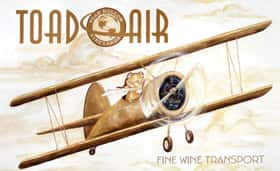
While recently redesigning the wine labels, the team wanted to “keep the toad’s whimsy, but add a bit of elegance that might relay the high quality of our wine,” Erickson says. Their new labels as well as Erickson’s toad art can be found in the tasting room and at www.frogntoadart.com.
Fire & the Vintage of 2017
Everyone will remember the October wildfires of 2017, but what about the vintage of 2017? The Tubbs Fire, the most destructive wildfire in California history, started on Tubbs Lane, which was named after Alfred Tubbs, founder of Chateau Montelena established in 1882. During the Hanley Fire in 1964, the Tubbs mansion burned down. Chateau Montelena was struck once again when the fire ignited a vineyard near Tubbs Lane in Calistoga.
The grapes survived the firestorm, but the winery opted not to harvest any of the affected fruit. “We lost $1 million in revenue,” says Winemaker Matt Crafton. “We didn’t pick it, so 2,000 cases won’t materialize. This brand is about integrity and fulfilling our obligation to our customers.”
Despite the damage, the vines survived. “The fire blew through the vineyard there, but in general, healthy vines don’t burn,” says Crafton. “They are the best fire buffers. Look at where many of the recent wildfires were contained in both Napa and Sonoma. They were in vineyards, especially on the hillsides. I hope the community considers that in light of the ballot initiative this June, which will limit sustainable, environmentally-conscious vineyard development in Napa County. And for no good reason.”
After the wildfires, the fruit on the vines was picked and donated for producing raisins. Crafton and the crew at Chateau Montelena are waiting to see how the vines respond in the months ahead. “We won’t know until the spring,” he says. But there is a silver lining to the ash left by the Tubbs Fire. “That’s the ‘burning’ joke,” he says with a smile. “Ash can be beneficial for the soil.”
As for the fruit picked before the firestorm, Crafton is optimistic about the vintage of 2017. Most of the winery’s grapes were picked before the wildfires. “After six or seven months of an amazing Napa Valley growing season, we are excited about the vintage.”
Fancy Rayzyns
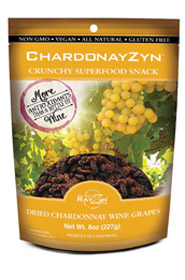 A one-of-a-kind superfood, Wine RayZyns, from The Wine RayZyn Company, are hand-harvested wine grapes made with the skin and seeds intact to provide a good source of fiber, nutrients and antioxidents.
A one-of-a-kind superfood, Wine RayZyns, from The Wine RayZyn Company, are hand-harvested wine grapes made with the skin and seeds intact to provide a good source of fiber, nutrients and antioxidents.
The Wine RayZyn Company was founded in 2014 by world-renowned cardiologist Chris Cates, M.D., and his son, Andrew, in Napa. Their mission is to provide healthy snack foods, while supporting sustainability efforts by offering vineyards a way to maximize their grape yield and reduce waste.
Since regular raisins are genetically modified to be seedless, they have fewer antioxidants than RayZyns. According to the founders, the heart-healthy nutrients from wine are called flavonoids, or more specifically, epicaticans. A handful of RayZyns has 10 times more epicaticans than a glass of wine. According to Dr. Cates, epicaticans have multiple health benefits. They improve brain and heart health, regulate blood sugar levels, enhance muscle growth and strength naturally and more.
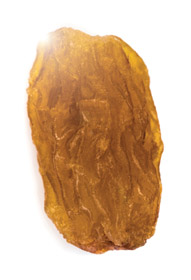 The RayZyn product line includes CabernayZyns, MerlayZyns and ChardonnayZyns. And if you’re looking for a sweet treat, try the Dark Chocolate Covered CabernayZyns.
The RayZyn product line includes CabernayZyns, MerlayZyns and ChardonnayZyns. And if you’re looking for a sweet treat, try the Dark Chocolate Covered CabernayZyns.
www.rayzyn.com
Author
-

Michael E. Duffy is a 70-year-old senior software engineer for Electronic Arts. He lives in Sonoma County and has been writing about technology and business for NorthBay biz since 2001.
View all posts


